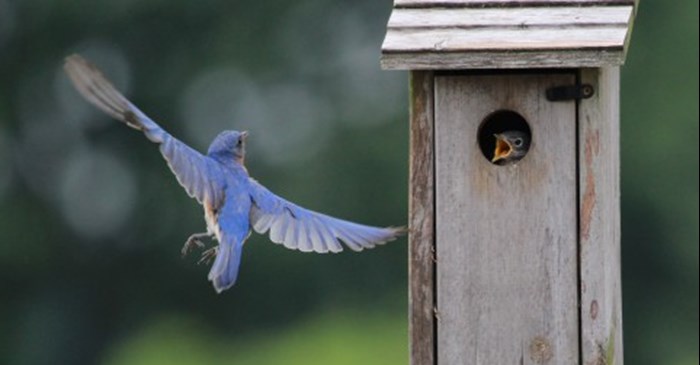Watching nesting birds is one of the treasures of spring and summer months. There is a great thrill in witnessing the tireless effort birds put into building nests, laying eggs, caring for their young, protecting their chicks and then, of course, watching the flying lessons during fledging. Providing nest boxes, also known as birdhouses, on your property is one way to enhance the experience.
For many species of birds, there is a shortage of great places to nest. There may be birds that would love to call your habitat home, but they have a specific nesting requirement which needs to be met. Birdhouses can be placed in backyards, schoolyards, parks, orchards, farms, pastures, cemeteries, woodlots, deserts, cities...you name it. Support more nesting birds, and give a bird a home.
When to place boxes
Make sure that your boxes are installed well before the breeding season begins. Don’t be discouraged if birds don’t begin nesting in them immediately; sometimes it takes time for the birds to discover them.
- In the south, place your nest boxes by February.
- In northern regions, place your nest boxes by mid to late March.
Where to place nest boxes
Because different species of birds prefer different kinds of nesting habitat, the vegetation surrounding your box will play a role in determining which species will nest in it. Remember: right box, right place.
If you are looking to attract a variety of species to your nest boxes and have ample room, you might consider pairing your boxes. This involves placing boxes in pairs on poles 15 to 25 feet apart. Or, you can put two boxes back to back on a single pole. Birds such as Tree Swallows and bluebirds will nest closely to one another, although they will drive away others of their own species. Pairing boxes has the advantage of allowing more birds of both species to coexist peacefully within the same habitat.
A word of caution: Golf courses, cultivated fields, gardens, and yards are potentially good habitats for nest boxes, but avoid areas where pesticides and herbicides are used. These are not only harmful to birds, they decrease and sometimes eliminate the insect populations that are the primary food source for many cavity-nesting species.
How to place your nest box
Whichever method you choose to install your boxes, be sure that they are secure enough to withstand high winds and severe weather. The best way to put up small nest boxes is on free-standing metal poles or PVC pipes. These pipes or poles offer several advantages:
- Nest boxes can be mounted higher than when mounted on a fence post.
- Some predators find poles difficult to climb.
- Poles can be easily equipped with predator guards.
Monitor your nestbox for science at NestWatch.org
